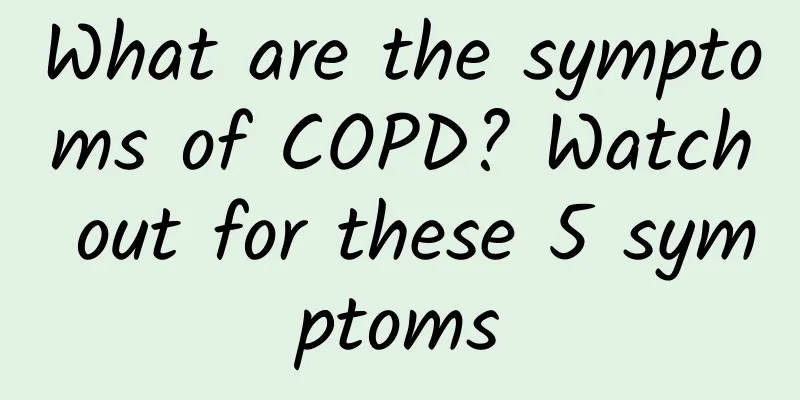More than 60 Chinese medicines are nephrotoxic

|
Most people are not familiar with nephrotoxicity, which is a toxic reaction to the kidneys caused by drugs. The general manifestations of nephrotoxicity vary in severity. The earliest symptoms may be proteinuria and tubular urine, followed by azotemia and renal dysfunction. In severe cases, acute renal failure and uremia may occur. So it cannot be ignored. So which drugs are nephrotoxic? Today I will introduce to you more than 60 kinds of Chinese medicines that are nephrotoxic. Nephrotoxicity can be transient or permanent. Common drugs that can cause nephrotoxicity include certain antibiotics, anti-tumor drugs, antipyretic, analgesic and anti-inflammatory drugs, anesthetics, iodinated contrast agents, lithium carbonate, and triamterene. The following are the most common drugs that can damage the kidneys and cause toxic reactions in clinical practice: (1) Antibiotics and other chemotherapeutic drugs: ① Common damage category: amphotericin B, neomycin, cephalosporin II, etc.; ② Common damage categories: gentamicin, kanamycin, streptomycin, tobramycin, amikacin, polymyxin, vancomycin, sulfonamides, etc.; ③ Occasional damage: penicillin (Ⅰ, Ⅱ, Ⅲ), ampicillin, carbenicillin, chlortetracycline, oxytetracycline, cephalosporin (Ⅳ, Ⅴ, Ⅵ), rifampicin, ethambutol, etc. (2) Non-steroidal anti-inflammatory analgesics: indomethacin, ibuprofen, phenylbutazone, piroxicam, aspirin, aspirin plus acetaminophen (APC), phenacetin, antipyrine, aminopyrine, paracetamol and naboxytocin, etc. (3) Tumor chemotherapy drugs: cisplatin, methotrexate, mitoxantrone, mitomycin-C, nitrosoureas, 5-fluorouracil, etc. (4) Antiepileptic drugs: trimethoprim-sulfamethoxazole, phenytoin sodium, etc. (5) Anesthetics: ether, methoxyflurane, etc. (6) Metals and chelating agents: penicillamine, etanercept, etc. (7) Various vascular contrast agents. (8) Others: Cyclosporine A, cimetidine, allopurinol, mannitol, mercurosan, heroin, low molecular weight dextran, etc. traditional Chinese medicine Research on the toxicity of traditional Chinese medicine has found that nearly 50 types of traditional Chinese medicine are toxic to the kidneys. In summary, there are three types of traditional Chinese medicine that can cause kidney damage. The first category is plant-based Chinese medicine, including Tripterygium wilfordii, Aconitum kusnezoffii, Akebia trifoliata, Quisqualis chinensis, Leonurus japonicus, Xanthium sibiricum, Melia azedarach bark, Radix Trichosanthis, Seed of Pharbitis chinensis, Root of Cherry Blossom, Fritillaria thunbergii, Aristolochia manshuriensis, Schizonepeta tenuifolia, Croton, Aloe vera, Clematis chinensis, Acer truncatum, Trillium gracile, Datura stramonium, Oleander, Folium Isatidis, Alisma orientalis, Stephania tetrandra, Gelsemium elegans, Senecio tenuifolia, Clove, Uncaria rhynchophylla, Psoralea corylifolia, Pulsatilla chinensis, Camellia sinensis, Sophora flavescens, Achyranthes bidentata, Rhizoma Cibotii, Cottonseed, and Root of Wintersweet. The second category is animal-based Chinese medicine, including blister beetles, fish gall, scorpions, centipedes, snake venom, etc. The third category is mineral Chinese medicines, including arsenic-containing ones (arsenic stone, arsenic trioxide, realgar, red alum), mercury-containing ones (cinnabar, mercuric chloride, calomel), lead-containing ones (red lead) and other minerals (alum). Damage signal In clinical practice, there are many kinds of drugs that can cause drug-induced renal damage. In addition to various Western medicines, traditional Chinese medicines that are generally believed by the general public to have small toxic side effects are also on the list. The clinical manifestations of drug-induced renal injury are varied. Some will experience lower back pain; some will experience changes in urine color; some will experience changes in urine volume, which may be more or less: sometimes the amount of urine increases at night, and the patient feels that they have to get up more often at night than before; some will also find that there is more foam in the urine than before, and it is not as easy to dissipate as before; some will experience edema of the eyelids or lower limbs; some will even develop anemia and high blood pressure; some patients will have non-specific manifestations, such as fatigue, loss of appetite, etc.; of course, some people do not feel anything, but only discover kidney problems due to occasional physical examinations or doctor's examinations. It can be seen that routine and regular monitoring is also important for patients who do not have any discomfort symptoms. It is recommended that if the patient experiences the above-mentioned discomfort symptoms after using the medication, he or she should seek medical attention promptly and undergo kidney disease-related examinations, and, if necessary, a kidney puncture biopsy. |
<<: Top Ten Chinese Patent Medicines for Kidney Yin and Yang Deficiency
>>: Six taboos of taking kidney-tonifying Chinese medicine
Recommend
How to clean your stomach after the holidays
Every year during the Spring Festival and other f...
Changes after Consistently Drinking Lingzhi Water
Ganoderma water is a medicinal water with relativ...
What are the causes of unilateral tinnitus?
Tinnitus, as the name suggests, is a buzzing soun...
How to turn white scars back to flesh color
White scars are also common in our daily life. Wh...
What diseases can Chuanhuang oral liquid treat?
Being ill is a very troublesome thing, because the...
What should babies with eczema avoid eating when breastfeeding?
If the baby develops eczema during breastfeeding,...
How long after taking Chinese patent medicine can I drink tea?
Tea contains tannic acid, caffeine, aminophylline...
What to do if your skin is dry all over your body? Here are some tips to make your skin more hydrated
Many people have extremely dry skin all over thei...
Do you always fart after pregnancy?
Farting is a very common thing, but many people a...
What to do when you feel upset during menopause?
The biggest symptom of menopause is irritability....
What should I pay attention to if I have nodules in my neck?
Neck nodules are a very common disease of the cer...
What are the effects of Wang Qi's ointment?
Wang Qi's paste prescription can mainly impro...
Can flat warts be transmitted to others? Timely treatment to prevent infection
Flat warts generally cause mild itching, and are ...
What to eat for emphysema
Emphysema is a relatively common physical disease...
What to do if you have a runny nose due to a cold? These methods are the most effective
The most common symptom of a cold is a runny nose...









